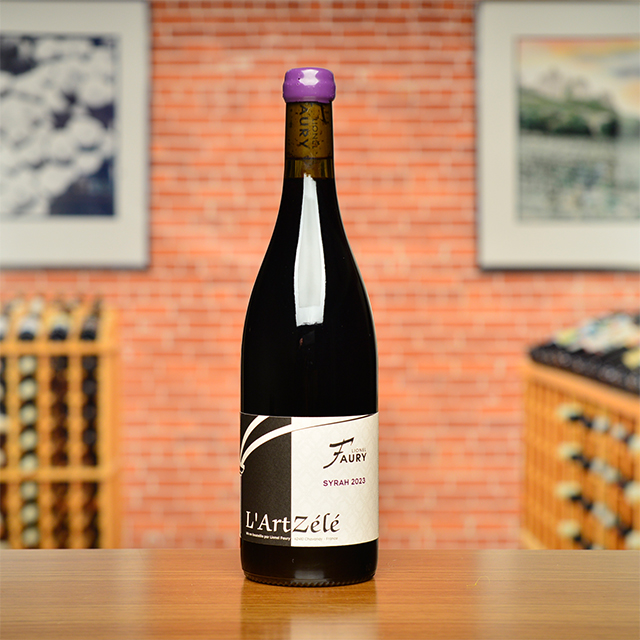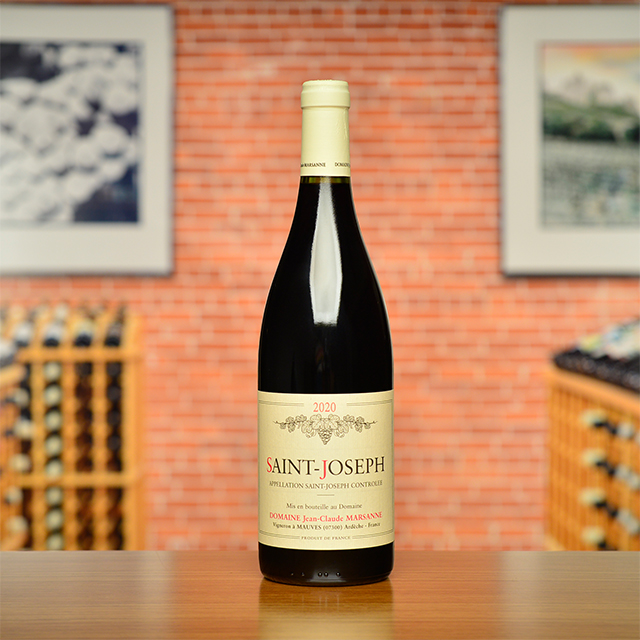Notify me
2016 Hermitage Blanc “La Pierrelle”
Barruol / Lynch
The first time I tasted the Barruol/Lynch Hermitage Blanc was several years ago with the KLWM staff after work one night. It was love at first sip—and heartbreak by the last, since we had sold out of our shipment. I’m always happy to revisit this wine and marvel at the impressively delicate profile, yet towering potential for growth. It’s classic Hermitage Marsanne, with lychee, nectarine, white flowers, and a focused minerality that provides a solid backbone. It’s so pretty! One sip of this and you’ll be clearing out space in the cellar for a few cases.
—Will Meinberg
| Wine Type: | white |
| Vintage: | 2016 |
| Bottle Size: | 750mL |
| Blend: | Marsanne |
| Appellation: | Hermitage |
| Country: | France |
| Region: | Northern Rhône |
| Producer: | Barruol Lynch - Northern Rhône |
| Winemaker: | Louis Barruol |
| Vineyard: | 80 years |
| Soil: | Granite |
| Aging: | Pressed and fermented in Burgundian barrels |
| Farming: | Lutte Raisonnée |
| Alcohol: | 13% |
More from this Producer or Region

2022 Côte-Rôtie
France | Northern Rhône
The pinnacle of traditional Côte-Rôtie being produced today.

2023 Collines Rhodaniennes Syrah “l’Art Zélé”
France | Northern Rhône
If you want to experience classic flavors of northern Rhône Syrah, here is a textbook example.

2021 Cornas
France | Northern Rhône
Majestically dark and brooding Cornas, layered with aromas of herbs and mint. Extremely limited availability

2022 Saint-Joseph Rouge “L’Instinct”
France | Northern Rhône
It is a real-deal northern Rhône roasted-slope Syrah that walks the tightrope perfectly between creamy fruit, meaty tannins, and fresh spine.

2023 Saint-Joseph Blanc “Clef de Sol”
France | Northern Rhône
This thoroughbred wine is sculpted for the cellar but still provides a lot of immediate gratification.

2001 Côte-Rôtie
France | Northern Rhône
**Extremely limited quantities, maximum two bottles per purchase.**

2020 Saint-Joseph Rouge
France | Northern Rhône
The kind of Saint-Jo to dig into right away: smoky, layered, lush, and laced with violet, bay leaf, and black olive.

2023 Crozes-Hermitage Rouge
France | Northern Rhône
This small parcel has a fruit-forward, approachable style, yet with intense spice and licorice in there as well, perhaps from the deep-rooted old Syrah vines.

2022 Côte-Rôtie “Emporium”
France | Northern Rhône
The “Emporium” is sourced exclusively from the Fourvier lieu-dit and sees about a year more in demi-muid and barrel than his standard Côte-Rôtie.

2022 Cornas
France | Northern Rhône
Majestically dark and brooding Cornas, layered with aromas of herbs and mint. Extremely limited availability
More from Northern Rhône or France
2021 Côte-Rôtie
Domaine Jamet France | Northern Rhône
2022 Saint-Joseph “Les Grisières”
André Perret France | Northern Rhône
2021 Côte-Rôtie “Besset”
Barruol / Lynch France | Northern Rhône
2021 Cornas
Domaine Clape France | Northern Rhône
2023 Condrieu
André Perret France | Northern Rhône
2001 Côte-Rôtie
Domaine Jamet France | Northern Rhône
2023 Saint-Joseph Rouge
Domaine Jean-Claude Marsanne France | Northern Rhône
2023 Saint-Joseph Rouge “Châtelet”
Domaine Monier Perréol France | Northern Rhône
2023 Saint-Joseph Blanc “Clef de Sol”
Domaine Jolivet France | Northern Rhône
2023 Crozes-Hermitage Rouge
Domaine Jean-Claude Marsanne France | Northern Rhône
2024 Collines Rhodaniennes Syrah “Les Hautes Ribaudes”
Lionel Faury France | Northern Rhône
2022 Condrieu “Chéry”
André Perret France | Northern Rhône
2021 Côte-Rôtie
Domaine Jamet France | Northern Rhône
2022 Saint-Joseph “Les Grisières”
André Perret France | Northern Rhône
2021 Côte-Rôtie “Besset”
Barruol / Lynch France | Northern Rhône
2021 Cornas
Domaine Clape France | Northern Rhône
2023 Condrieu
André Perret France | Northern Rhône
2001 Côte-Rôtie
Domaine Jamet France | Northern Rhône
2023 Saint-Joseph Rouge
Domaine Jean-Claude Marsanne France | Northern Rhône
2023 Saint-Joseph Rouge “Châtelet”
Domaine Monier Perréol France | Northern Rhône
2023 Saint-Joseph Blanc “Clef de Sol”
Domaine Jolivet France | Northern Rhône
2023 Crozes-Hermitage Rouge
Domaine Jean-Claude Marsanne France | Northern Rhône
2024 Collines Rhodaniennes Syrah “Les Hautes Ribaudes”
Lionel Faury France | Northern Rhône
2022 Condrieu “Chéry”
André Perret France | Northern Rhône
Kermit once said...

Kermit once said...
I want you to realize once and for all: Even the winemaker does not know what aging is going to do to a new vintage; Robert Parker does not know; I do not know. We all make educated (hopefully) guesses about what the future will bring, but guesses they are. And one of the pleasures of a wine cellar is the opportunity it provides for you to witness the evolution of your various selections. Living wines have ups and downs just as people do, periods of glory and dog days, too. If wine did not remind me of real life, I would not care about it so much.
Inspiring Thirst, page 171














